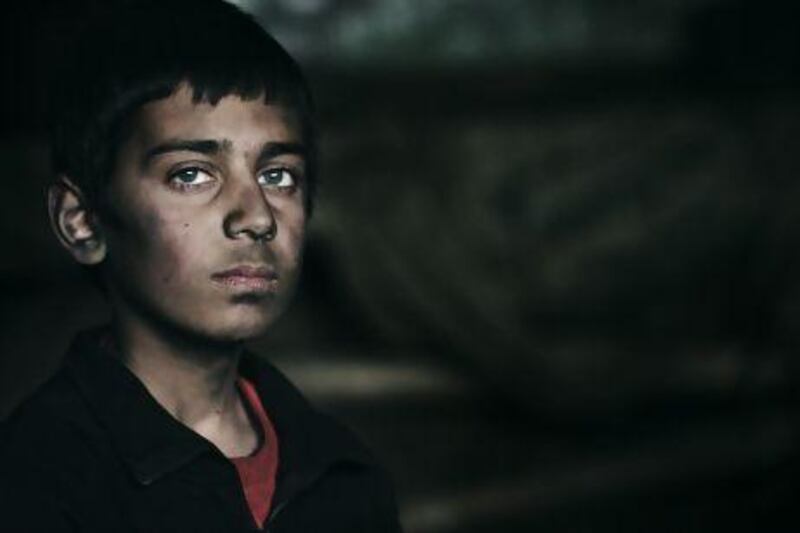Afghans need good news these days, and some may be arriving from a distant place: Hollywood. A film made in Kabul, by a US director, is up for an Oscar this weekend, in the Live Action Short Film category.
But win or lose, many of Afghanistan's artists will be asking if this film project will be more than a one-off. Sadly, odds are against a happy ending.
The 29-minute Buzkashi Boys is about a street urchin and a blacksmith's son who dream of escaping the grind of their daily lives and achieving stardom by playing the national game.
Buzkashi is fast and furious: players on horseback battle for control of a goat carcass. Top players are venerated as heroes and achieve considerable status and wealth by Afghan standards.
The film features some of the Afghan capital's most dramatic landmarks: the bombed-out palace of Darulaman, the bus graveyard and the Dickensian streets of Murad Khane (the "old city") where the blacksmith's shop is. The film is gorgeous to watch, and brings back memories of a place where I spent over four years as a journalist before leaving in September.
Yet I can't help but wonder if art will imitate life. Can the actors find fame as their characters strive to do? Will the boys - Fawad Mohammadi and Jawanmard Paiz, both now 14 - be launched into successful careers, and saved from the trials of constant war? The precedents are not good. The children who appeared in The Kite Runner had to leave Afghanistan, for their own safety. The young stars of Slumdog Millionaire are still living in Mumbai squalor.
At least, the boys of Buzkashi Boys can bask in their moment of glory. News reports generated by the nomination, most of them about the difficulties of filming in a war zone, multiplied after the Afghan Film Project, the non-governmental organisation that made the film, launched a "crowdfunding" campaign to get the two young stars to the Academy Awards ceremony in Los Angeles.
The campaign had raised $10,000 before the US Embassy in Kabul and Turkish Airlines offered to cover the flight and other expenses of the trip.
The crowdsourced money will now go to Fawad's education. Jawanmard, son of an actor and himself one since age 5, has had a relatively privileged upbringing. But Mr Mohammadi, fatherless, supports his family by selling maps to tourists on Kabul's Chicken Street, where he has charmed legions of foreigners. After this weekend he is likely to have enough money for a good education.
Somewhat forgotten, however, are the aspiring young filmmakers whom the Afghan Film Project ostensibly set out to help.
The US Department of State gave the AFP $347,000 to train young local filmmakers. But to make the film, director Sam French flew a crew in from LA. They were supposed to mentor an Afghan along the way, but reports from the set suggest that the 12 Afghan trainees were sidelined.
"Training" consisted of some group discussions and the Afghans "shadowing" the LA group. But there was no hands-on practical experience to help set them up for future employment, according to two people who visited the set. "I can't imagine any one of them walked away with enough training to go work on another production in a fully trained professional capacity," one of those people said.
Also, the film was edited in the US, depriving an Afghan trainee of a chance to learn about that skill.
Burning through $347,000 to make one short film seems a trifle profligate. It is certainly not a "shoestring" budget. Arguably US taxpayers' money should have been spread more thinly, to fund more training, rather than being used to make one film to propel a director to the Oscars. The film's website gives no indication of other projects in the pipeline nor is there any sign of any movies developed "from script to screen" by Afghan filmmakers.
French also insisted on shooting with RED cinema cameras - an American brand that is expensive to hire and insure. That offered little benefit to Afghan filmmakers, who cannot afford RED. Afghanistan's film and TV industry mainly uses MiniDV, a far lower standard.
French told Associated Press he understood the pitfalls of working with child actors from developing countries. "We're not filmmakers who just do a film and leave. We remain there and present," he said.
But that remains to be seen.





